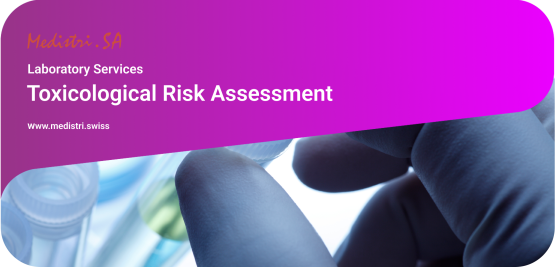(Download: Toxicological Risk Assessment in PDF by Medistri)
Certain regulatory bodies require a toxicological assessment of extractables and leachables, for certain products, to establish the device’s safety limits of these impurities. ISO 10993-17:2023 specifies the determination of allowable limits for substances leachable from medical devices. It is intended for use in deriving standards and estimating appropriate limits where standards do not exist. It describes a systematic process through which identified risks arising from toxicologically hazardous substances present in medical devices can be quantified.
The concept of Toxicological Risk Assessment (TRA) has its roots in the field of toxicology, which is the study of the adverse effects of chemical substances on living organisms. Alongside an analytical chemical characterization study, certain regulatory bodies require a toxicological assessment of extractables and leachables, for certain products, to establish the device’s safety limits of these impurities.
Toxicological Risk Assessment (TRA) ensures that products are safe for consumers to use by identifying any potential health risks associated with the use of a product. This allows manufacturers to mitigate these risks before the product reaches the market.
👉 TRA is also necessary for regulatory compliance as many countries have regulations requiring TRA for certain products such as pharmaceuticals and medical devices. Conducting a TRA helps ensure that a product complies with these regulations.
Moreover, TRA can guide the development of new products and the improvement of existing ones. By identifying potentially harmful ingredients or combinations of ingredients, manufacturers can modify their formulations to reduce risk.
Also, if a product causes harm, having conducted a thorough TRA can provide a degree of legal protection for the manufacturer.
A TRA must be performed by a qualified toxicologist, involving an extensive review of all available scientific resources in relation to the toxicology of the leachable and/or extractable. In situations where there is insufficient literature data, studies must be conducted in order to complete the risk assessment.
Implementing a Toxicological Risk Assessment (TRA) for medical devices involves several steps:
- Hazard Identification and Data Evaluation: This involves identifying the potential hazards associated with the materials used in the device. It includes reviewing all available scientific resources in relation to the toxicology of the leachable and/or extractable.
- Exposure Assessment: This step involves determining the level of exposure to the identified hazards. Factors such as how the device is used, how often it’s used, and the duration of use are considered.
- Dose-Response Assessment: This step involves understanding the relationship between the dose of the hazardous substance and the response it elicits.
- Risk Characterization: This final step involves integrating the data from the previous steps to assess the risk associated with the device.
ISO 10993-17:2023 is a standard that specifies the process and requirements for the toxicological risk assessment of medical device constituents. It includes the methods and criteria used to assess whether exposure to a constituent is without appreciable harm. The toxicological risk assessment can be part of the biological evaluation of the final product, as described in ISO 10993-1.
The process described in ISO 10993-17:2023 applies to chemical characterization information obtained in line with ISO 10993-18. When a toxicological risk assessment of either the compositional information or analytical chemistry data (e.g., extractable data or leachable data) are required to determine whether the toxicological risks related to the constituents are negligible or tolerable.
ISO 10993-17 was recently revised and the new version was published on September 13, 2023. The revision provides practical solutions for the analysis of medical device constituents and adds numerous clarifications to harmonize the methodology of toxicological risk assessment in the TRA. This ensures that the standard remains up-to-date with the latest scientific understanding and best practices in the field of medical device safety and toxicological risk assessment.
In the rapidly evolving medical device industry, ensuring safety and compliance with international standards is paramount. The ISO 10993-17:2023 standard, which outlines the process for Toxicological Risk Assessment (TRA), plays a crucial role in this. This standard provides a comprehensive framework for evaluating the potential health risks associated with medical device constituents, ensuring that products are safe for their intended use.
🎯 To learn more about Medistri’s Toxicological Risk Assessment, visit on our website here or directly contact our team at contact@medistri.swiss.
- The Medistri Team
#Medistri
